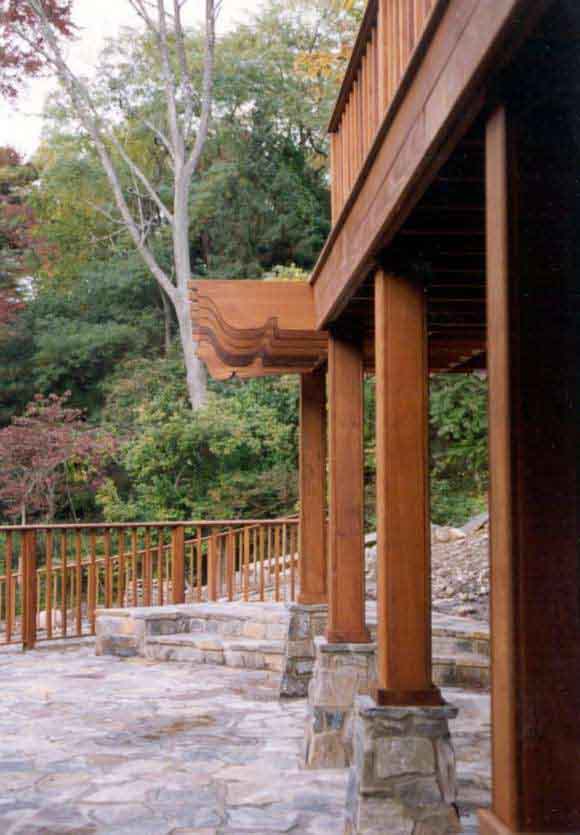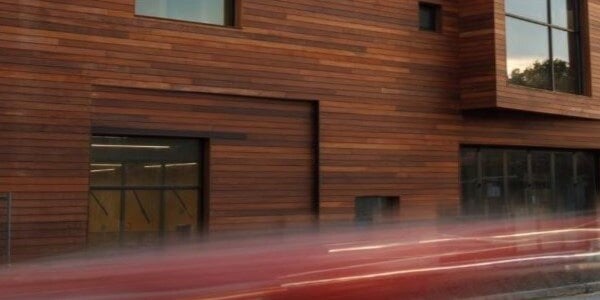
Related Posts



Although it is impossible to prevent a certain amount of checking and cracking in heavy or large timbers, there are techniques that can be used to help minimize this naturally occurring phenomena. You may be surprised to learn that some checking can be beneficial to exterior woods.
Wood moves, naturally, throughout its growth cycle, and continues to move throughout its usable life cycle, long after it is harvested, dried, milled and used as lumber. Because thinner boards can be kiln dried, most of the movement has already been minimized before it ever reaches a job site. Thicker materials, on the other hand, are often too big to kiln dry, and may take years to fully dry out.

The larger the board or timber, the more likely it is to move, and check, and crack. Larger timbers always check and crack somewhat. Need an example? Look at any telephone pole you have ever seen – there are a certain amount of checks, cracks and splits that are visible.
Because it takes large timbers and heavier materials a long time to fully acclimate on site, some checks and cracks may occur with 3x and 4x nominal thickness materials over time.
The bigger the timber, the more apparent (deeper, wider, longer) the checking is likely to be. Large timbers act more like a log than a board. When checking naturally occurs in a log when it is in place on a site, this is not necessarily a bad thing. In fact, wood scientists will tell you that when heavier timbers or logs check, it rarely affects the strength of the board.
Natural checking will actually relieve some of the built-up tension inside the wood and make it stronger. In fact, the US Forest Products Laboratory has developed criteria for the allowable amount of checks or cracks to maintain the strength of the beam or structural member.
There is no way to prevent the naturally occurring process of checking from happening, especially when the wood will be used outdoors. Outdoor environments experience the most dramatic range of environmental exposure. From snow, inclement weather, pouring rain, howling winds, direct sunlight, freezing, thawing, high temperatures and low temperatures, wood that’s used outdoors experiences the full range of nature’s punishment.

During the warmer months of June, July and August especially, we occasionally hear comments like, “my 4x4 wood is cracking,” or “my wood seems to be splitting”. No surprise there – warmer weather and lots of UV exposure will often hurry the acclimation process, sometimes too quickly. However, many of these seasonal checks and cracks tend to close up over time.
While you can’t eliminate the checking entirely, you can help minimize it through proper on-site wood acclimation practices. Always follow proper acclimation instructions for best results. This includes storing the wood in a shaded area, well away from ground moisture and allow the ends and edges of the boards to breathe.
Download Critical Acclimation Checklist here.
When should I seal the ends of hardwood boards? Immediately after cutting them. This helps minimize end checking from the most vulnerable area on a piece of wood – the end grains. Water moves quickly along the grains of wood. Slowing down the escape of water from the cut ends is crucial to proper installation techniques and affects the performance of the wood.
Putting a UV inhibitive finish on the wood, immediately after installation, is an effective way to minimize surface checking. It’s like going to the beach with (or without) suntan lotion. Better to be safe than (painfully) sorry.

Another technique to help minimize checking is to cut a kerf or kerfs into the back of a heavy timber. Ancient Japanese carpenters used this technique thousands of years ago and the same holds true today. Modern hardwood flooring producers use the same method. Most wood decking sold in Europe nowadays has a fluted profile on one or both faces. Adding relief grooves on one side of a heavy timber immediately relieves much of the tension in hardwoods and helps minimize potential movement.


